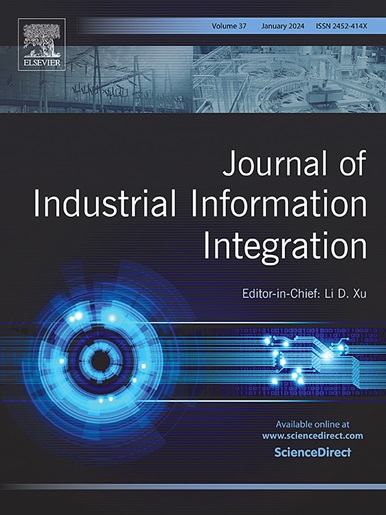Adaptive threshold in Leaky-Integrated-and-Fire function for audio-based industrial diagnosis
IF 10.4
1区 计算机科学
Q1 COMPUTER SCIENCE, INTERDISCIPLINARY APPLICATIONS
引用次数: 0
Abstract
Audio-based fault diagnosis identifies machine operating conditions through acoustic signals, enabling targeted maintenance and reducing downtime in smart manufacturing and embodied intelligence. The traditional Leaky-Integrated-and-Fire (LIF) function in neural networks improves fault state classification by removing shared information while preserving category-unique features. However, its threshold, a backpropagation-optimized parameter that governs the information removal pattern, becomes a fixed constant after training. This constant threshold enforces a uniform information removal pattern across all audio samples despite the significant variations in time–frequency characteristics. Motivated by this and inspired by the auditory system’s adaptive modulation, in contrast to the traditional constant threshold, where the threshold remains a constant after training, this paper proposes a learnable Adaptive Threshold, allowing the threshold to dynamically adapt to the input audio even after training. As the threshold adapts to different inputs rather than remaining a fixed constant, more unique information can be preserved to enhance classification accuracy. The results demonstrate that the adaptive threshold outperforms the constant threshold and other state-of-the-art methods, achieving 99.75% on the IDMT Engine dataset and 98.11% on the MIMII Pump dataset. Visualization results confirm that while both the adaptive threshold and constant threshold successfully suppress non-unique background sounds, such as flowing water, the adaptive threshold demonstrates superior performance in preserving unique features, such as the impact sound from a broken pump. This capability contributes to more accurate fault diagnosis, further validating the effectiveness of the proposed method.
基于音频的工业诊断中泄漏-集成-火灾功能的自适应阈值
基于音频的故障诊断通过声学信号识别机器运行状况,实现有针对性的维护,减少智能制造和嵌入式智能的停机时间。神经网络中传统的LIF (leaky - integrated and fire)函数通过去除共享信息同时保留类别唯一特征来改进故障状态分类。然而,它的阈值,一个反向传播优化的参数,控制信息去除模式,在训练后成为一个固定的常数。这个恒定的阈值在所有音频样本中强制执行统一的信息去除模式,尽管时间-频率特征有显著变化。受此启发,并受听觉系统自适应调制的启发,本文提出了一种可学习的自适应阈值,与传统的恒定阈值在训练后保持恒定的情况不同,该阈值即使在训练后也能动态适应输入音频。由于阈值可以适应不同的输入,而不是保持一个固定的常数,因此可以保留更多的唯一信息,从而提高分类精度。结果表明,自适应阈值优于恒定阈值和其他最先进的方法,在IDMT引擎数据集上达到99.75%,在MIMII泵数据集上达到98.11%。可视化结果证实,虽然自适应阈值和恒定阈值都能成功地抑制非独特背景声音(如流水声),但自适应阈值在保留独特特征(如损坏泵的冲击声)方面表现出卓越的性能。这种能力有助于更准确的故障诊断,进一步验证了所提方法的有效性。
本文章由计算机程序翻译,如有差异,请以英文原文为准。
求助全文
约1分钟内获得全文
求助全文
来源期刊

Journal of Industrial Information Integration
Decision Sciences-Information Systems and Management
CiteScore
22.30
自引率
13.40%
发文量
100
期刊介绍:
The Journal of Industrial Information Integration focuses on the industry's transition towards industrial integration and informatization, covering not only hardware and software but also information integration. It serves as a platform for promoting advances in industrial information integration, addressing challenges, issues, and solutions in an interdisciplinary forum for researchers, practitioners, and policy makers.
The Journal of Industrial Information Integration welcomes papers on foundational, technical, and practical aspects of industrial information integration, emphasizing the complex and cross-disciplinary topics that arise in industrial integration. Techniques from mathematical science, computer science, computer engineering, electrical and electronic engineering, manufacturing engineering, and engineering management are crucial in this context.
 求助内容:
求助内容: 应助结果提醒方式:
应助结果提醒方式:


